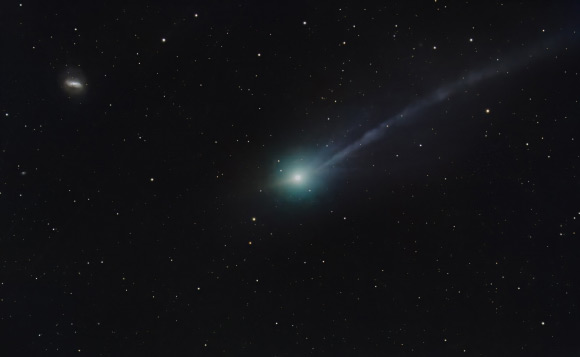A member of the ICQ Comet Observations group has released a new image of 3I/ATLAS, the third object and the second comet from outside the Solar System confirmed.

This image of the interstellar comet 3I/ATLAS was captured with the Celestron EdgeHD 800 telescope on November 16, 2025. Image credit: Satoru Murata.
3I/ATLAS was discovered by the Asteroid Terrestrial-impact Last Alert System (ATLAS) survey telescope in Rio Hurtado, Chile, on July 1, 2025.
The comet’s orbit is the most dynamically extreme of any object yet recorded in the Solar System.
3I/ATLAS, also known as C/2025 N1 (ATLAS) and A11pl3Z, reached its closest approach to the Sun on October 30, 2025.
On November 16, 2025, Satoru Murata from the ICQ Comet Observations group observed the comet using the 0.2-m Celestron EdgeHD 800 telescope.
The new images show three separate jets towards as well as one jet away from the Sun.
“I captured the interstellar comet early morning as a thin crescent Moon passed immediately next to it,” said Murata, who is based in New Mexico, the United States.
“Still was able to capture three separate jets of ionic tail, and an anti tail? Or the dust tail?”
“The comet was also passing by the galaxy NGC 4691, which really gave the impression of the object being from another world,” he added.








![The image shows NGC 1866 superimposed with a false color image from the MUSE data cube, where the ionized shell of the planetary nebula Ka LMC 1 is seen as a red ring. The grayscale insets illustrate the different size of the ionized shells of singly ionized nitrogen [N II] and doubly ionized oxygen [O III]. The magnified Hubble image near the center of the ring reveals the presence of a pale blue star -- most probably the hot central star of Ka LMC 1. Image credit: AIP / M.M. Roth / NASA / ESA / Hubble.](https://cdn.sci.news/images/2025/11/image_14348-Ka-LMC-1-104x75.jpg)